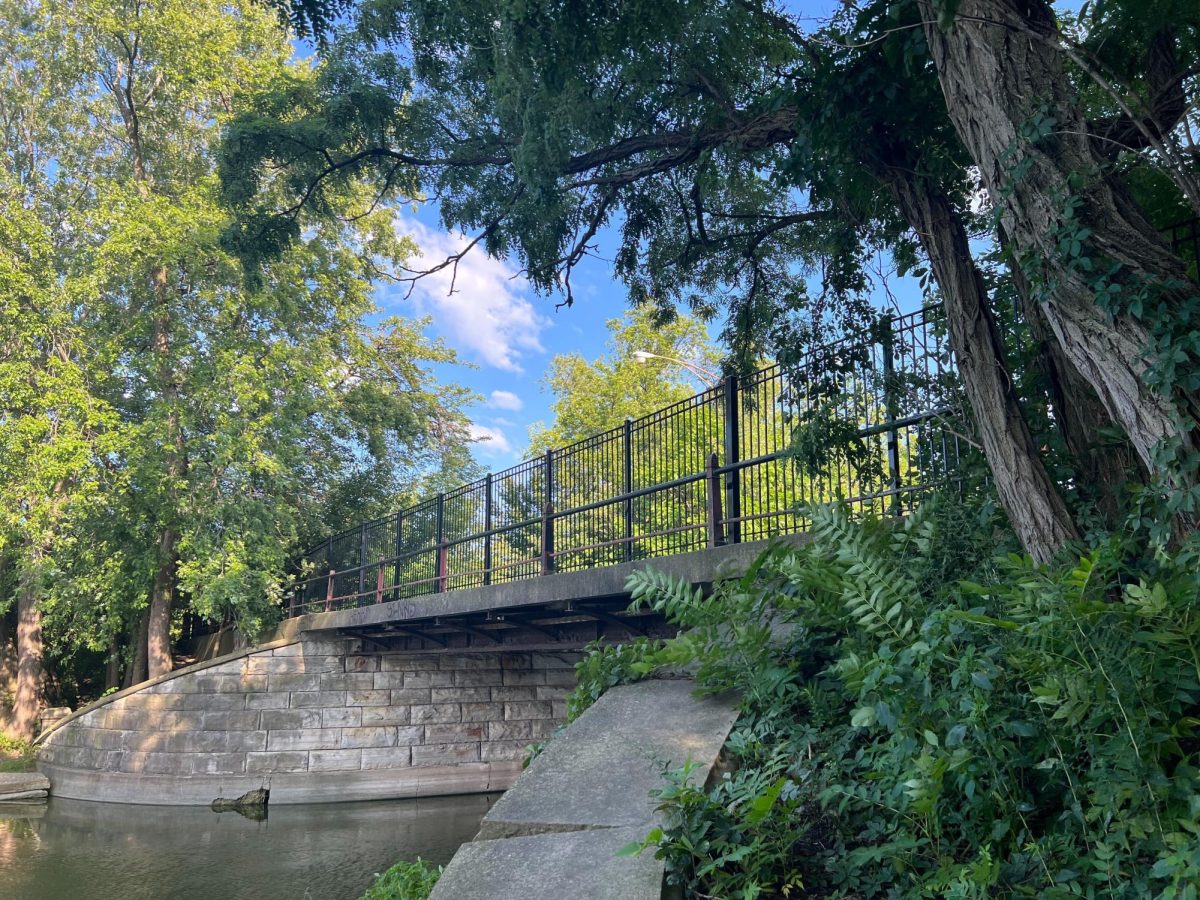Clarence Darrow Bridge, which overlooks the lagoon south of the Museum of Science and Industry, is one of the few remnants of the famous landscape architect Frederick Law Olmsted’s original vision for Jackson Park. Now, as the Chicago Department of Transportation (CDOT) embarks on a project to replace the bridge, community organizers are mobilizing in favor of conserving and repairing the historic structure.
The bridge, built in 1880, takes its name from a prominent 19th century labor and criminal lawyer. It has witnessed nearly 150 years of park-goers, from visitors to the 1893 World’s Fair to the Clarence Darrow admirers who gather annually at the bridge to commemorate his death. Due to safety concerns, the bridge has been closed to the public since 2013.
The Clarence Darrow Bridge Preservation (CDBP) Coalition formed in response to the news that the CDOT had received federal funds to demolish and replace the bridge and was entering a Section 106 Review Process. Section 106 applies to federal or federally-assisted projects that have the potential to affect historic properties, and requires the entity undertaking the project to consult with relevant public organizations in order to mitigate adverse effects.
“About two months ago, we heard that there was a new plan coming down the pipeline and we wanted to be prepared for it,” Jack Spicer, an organizer involved with the CDBP coalition, said. Spicer said that the coalition is hoping for a bridge repair that stays as true to the original structure as possible.
One of the coalition’s biggest concerns is the preservation of the limestone abutments on either side of the bridge, which Spicer said the CDOT seems to be considering replacing with concrete.
An independent engineering condition assessment commissioned by the Clarence Darrow Bridge Preservation Coalition found that repairing the bridge’s superstructure—the part of the bridge which bears weight—may not be feasible. However, many of the bridge’s railings, along with many of the limestone retaining units along the water, were found to be salvageable. The report concludes that “it should be possible to retain extensive historic fabric for reuse in the repaired or reconstructed bridge.”
“Hopefully this is going to work out well and CDOT and the various organizations in the community will be able to work this out in a way that works for everyone, but we won’t know this until we see the drawings and the plans,” Spicer said.
In their announcement of the Section 106 Review process, the CDOT said that they intend to “salvage and reuse as much historic material, including limestone blocks, railings, and uprights, as possible, as well as replacing deteriorating character-defining materials, finishes, and features in-kind in order to reconstruct the bridge to its 1895 appearance.”
In the Section 106 process, drawings, plans, and evidence will become available to the public.
“Our hope is that we can give CDOT the benefit of the doubt and we can all come up with a really good plan that will work for the benefit of the community and the public,” Spicer said.









